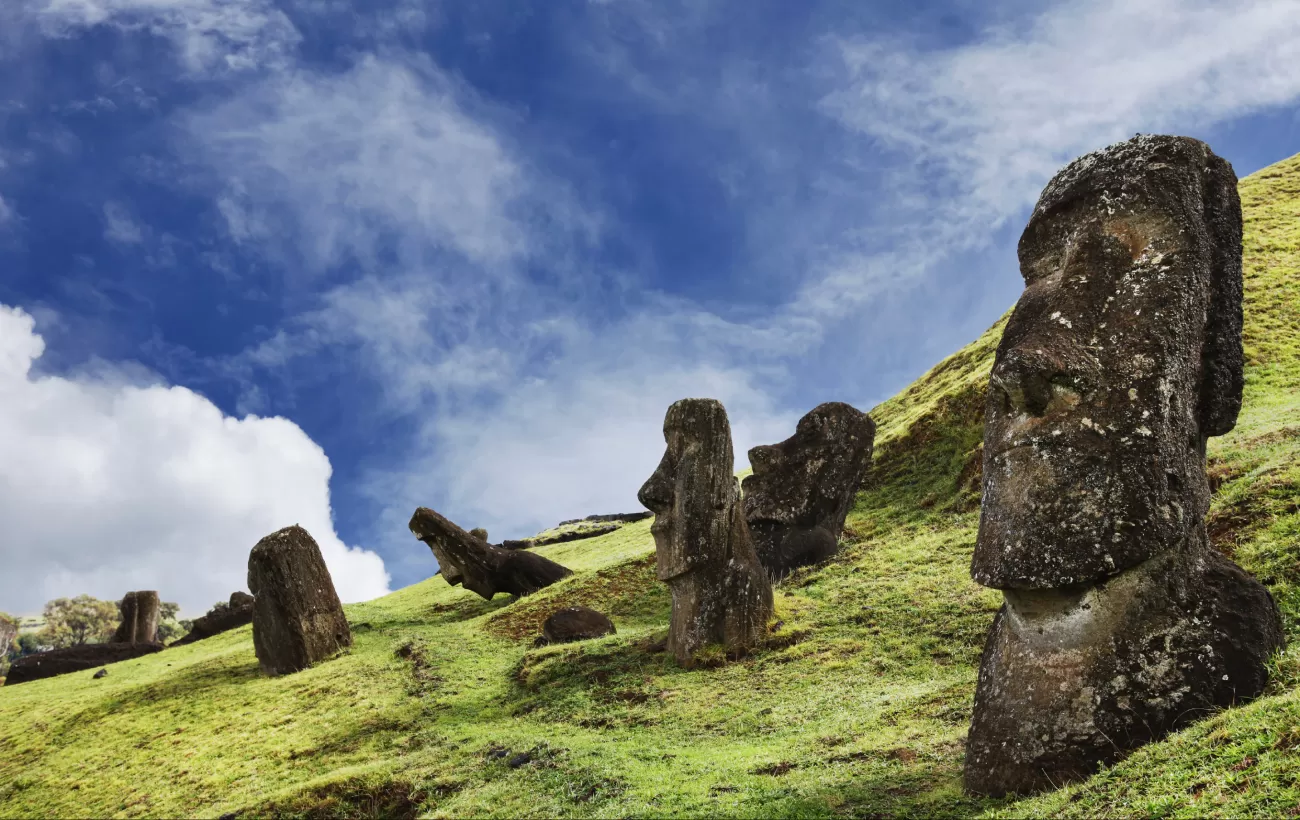Easter Island, also known as Rapa Nui, is a remote volcanic island in the Pacific Ocean, famous for its enigmatic Moai statues and rich Polynesian culture. Exploring this captivating island is a journey through history, myth, and natural beauty. Guided excursions and tours offer visitors the opportunity to delve deep into the island’s secrets and uncover its hidden treasures.
1. Discovering the Moai Statues:
At the heart of Easter Island’s allure are the Moai statues, colossal stone figures that dot the landscape. Guided tours take visitors to iconic sites such as Ahu Tongariki, where 15 towering Moai stand proudly against the backdrop of the Pacific Ocean. Experienced guides provide insights into the history and significance of these statues, offering interpretations of their mysterious origins and the cultural practices of the island’s ancient inhabitants.
2. Exploring Sacred Sites:
Easter Island is replete with sacred ceremonial platforms known as “ahu,” which served as focal points for religious rituals and community gatherings. Guided excursions lead visitors to sites like Ahu Akivi, a platform adorned with seven Moai facing the sea, believed to represent the island’s original explorers. Through expert commentary, travelers gain a deeper understanding of the spiritual beliefs and customs of the Rapa Nui people.
3. Trekking Through Volcanic Landscapes:
The rugged terrain of Easter Island offers adventurers the opportunity to explore its volcanic origins. Guided hiking tours traverse ancient lava fields, revealing hidden caves, petroglyphs, and panoramic vistas. One popular trek is to the summit of Maunga Terevaka, the island’s highest point, providing unparalleled views of the coastline and surrounding ocean. Knowledgeable guides share geological insights and ecological information, enhancing the experience of immersion in the island’s natural wonders.
4. Immersing in Cultural Experiences:
Guided tours on Easter Island extend beyond archaeological sites to encompass immersive cultural experiences. Visitors can participate in traditional dance performances, learn the art of crafting Rapa Nui handicrafts, and engage with local communities to gain a deeper appreciation for their way of life. These encounters offer invaluable insights into the resilience and vibrancy of Rapa Nui culture in the modern era.
5. Navigating Sustainable Tourism Practices:
As the popularity of Easter Island as a tourist destination grows, there is a concerted effort to promote sustainable tourism practices. Guided excursions prioritize environmental conservation and cultural preservation, adhering to responsible travel principles. Visitors are encouraged to respect sacred sites, minimize their ecological footprint, and support local initiatives that benefit the island’s residents.
In conclusion, guided excursions and tours on Easter Island offer travelers a multifaceted journey of discovery, blending archaeological wonders, natural beauty, and cultural immersion. With knowledgeable guides leading the way, visitors can unravel the mysteries of this remote island paradise while fostering a deeper appreciation for its unique heritage and ecosystem.



